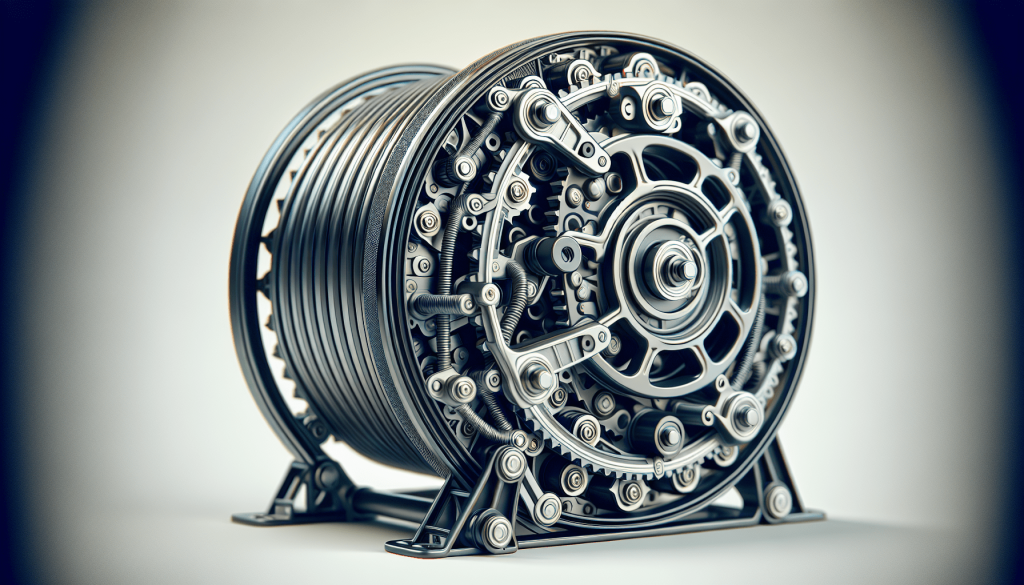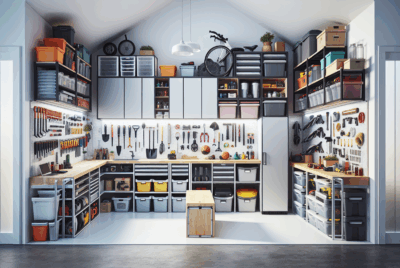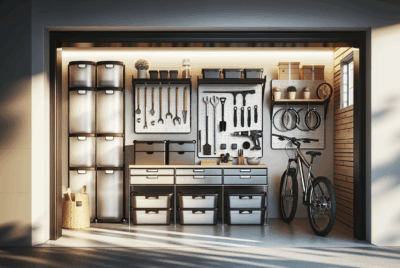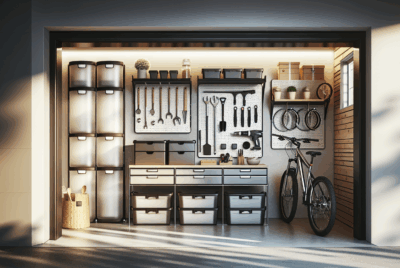How To Replace Garage Door Rollers
As an Amazon Associate, I earn from qualifying purchases, at no additional cost to you. Disclaimer
Hey there! Ever struggled with a squeaky or stuck garage door? Well, I’ve got some good news for you. In this article, we’ll be exploring the simple yet effective process of replacing garage door rollers. You’ll learn everything you need to know to tackle this DIY project with confidence, from identifying the type of roller you need to step-by-step instructions on how to replace them. So let’s roll up our sleeves and get started on giving your garage door the smooth and silent operation it deserves!
Understanding the Importance of Garage Door Rollers
Significance of garage door rollers in the operation of the garage door
Garage door rollers play a crucial role in the smooth functioning of your garage door. They are small wheels that are attached to the sides of the door and allow it to glide up and down along the tracks. Without properly functioning rollers, opening and closing the garage door can become a challenging and potentially dangerous task. Therefore, it is essential to understand the significance of garage door rollers and why their maintenance and replacement are vital.
Consequences of damaged or old garage door rollers
When garage door rollers become damaged or worn out over time, they can present several issues. Firstly, they can create friction and resistance, making it difficult for the door to open and close smoothly. This can strain the opener’s mechanism, leading to premature wear and tear of other components. Additionally, damaged or old rollers can cause misalignment of the door, resulting in gaps or uneven closing. This not only compromises the security of your garage but also affects its energy efficiency. Furthermore, if overlooked for too long, faulty rollers may cause the door to come off the tracks completely, posing a significant safety risk.
Indications that your garage door rollers need replacement
Recognizing the signs that your garage door rollers need replacement is important to prevent any inconvenience and potential damage. Some common indicators include excessive noise during operation, difficulty in opening or closing the door, visible wear or damage to the rollers, and the door becoming misaligned. If you notice any of these signs, it is advisable to inspect your rollers thoroughly and consider replacing them if necessary.
Identifying the Right Replacement Rollers
Types of garage door rollers
When it comes to selecting suitable replacement rollers for your garage door, you need to be aware of the different types available. The two primary types are nylon rollers and steel rollers. Nylon rollers are the most common and are known for their durability, smooth operation, and noise reduction. On the other hand, steel rollers are heavier and more suitable for industrial or heavy-duty applications. Understanding the characteristics and benefits of each type of roller can help you make an informed decision based on your specific needs and budget.
Choosing the appropriate size and type of roller based on your garage door
To ensure a proper fit and optimal performance, it is crucial to choose the right size and type of roller for your garage door. Rollers are available in various sizes, typically ranging from 2 to 3 inches in diameter. It is essential to measure the current rollers on your door accurately and match them with the new ones. Additionally, consider factors such as the weight of your garage door, the type of track system it uses, and the level of noise reduction you desire. Taking these factors into account will help you select the most appropriate roller for your specific garage door.
Where to purchase garage door rollers
When it comes to purchasing replacement garage door rollers, there are several options available to you. You can find them at local home improvement stores, garage door specialty stores, or online retailers. It is advisable to do some research and compare prices, quality, and customer reviews before making a purchase. Additionally, consult with a professional if you are unsure about the specific requirements of your garage door or need assistance in selecting the right rollers.

Tool Gathering
List of tools needed to replace garage door rollers
Before embarking on the task of replacing your garage door rollers, it is essential to gather all the necessary tools to ensure a smooth and hassle-free process. The tools you will typically require include a flathead screwdriver, a pair of pliers, an adjustable wrench, a socket set, a hammer, a ladder, and lubricant.
Safety equipment recommendations
Safety should always be a top priority when working on any home improvement project, including replacing garage door rollers. It is crucial to protect yourself by wearing appropriate safety equipment. Recommended safety equipment includes safety glasses or goggles, gloves, and closed-toe shoes to protect your eyes, hands, and feet from potential injuries. Additionally, consider wearing ear protection to minimize the noise during the process.
Importance of having all required tools prior to starting the project
Having all the required tools on hand before starting the project is essential for efficiency and safety. Making sure you have everything you need beforehand saves time and minimizes the risk of delays or accidents. Additionally, it avoids the frustration of having to stop midway through the project and search for missing tools. By being prepared with all the necessary equipment, you can focus solely on the task at hand and complete the replacement process smoothly.
Safety Precautions
Checking the power source and disconnecting the automatic door opener
Before you begin replacing your garage door rollers, it is crucial to ensure you disconnect the power source and disable the automatic door opener. This is important for preventing any accidental movement of the door during the replacement process. To do this, locate the power cord of the automatic opener and unplug it from the electrical outlet. Additionally, engage the manual release handle to disconnect the opener from the door. Taking these precautions will help avoid any potential injuries or damage caused by a moving garage door.
Proper handling of tools
While working with any tools, it is important to handle them properly to prevent accidents or damage. Ensure you use the tools correctly according to their intended purpose and manufacturer’s instructions. For example, when using a screwdriver or pliers, apply force only in the direction designed for tightening or loosening screws or fasteners. This will help avoid slipping and potential injuries. Additionally, use caution when handling the hammer or any other striking tools to prevent accidental harm to yourself or surrounding objects.
General safety guidelines to follow when working on garage doors
In addition to specific safety precautions, there are general guidelines that should be followed when working on garage doors. These include:
- Never attempt to replace garage door rollers alone. It is best to have at least one other person present to assist with the process.
- Avoid wearing loose clothing or jewelry that may get caught in moving parts of the door.
- Keep children and pets away from the work area to prevent accidents or distractions.
- Always be aware of your surroundings and ensure there is adequate lighting in the workspace.
- If you encounter any unexpected difficulties or uncertainties, consult a professional for assistance.
By adhering to these safety guidelines, you can minimize the risk of accidents and complete the garage door roller replacement task safely.
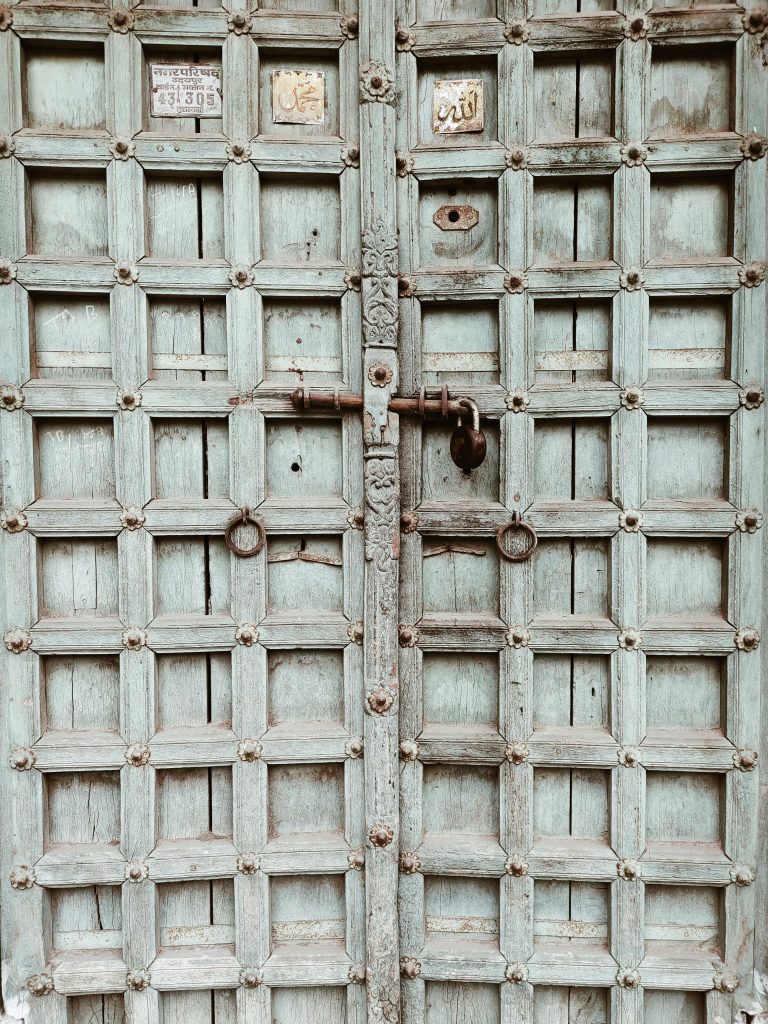
Opening the Garage Door
Steps for manually opening the garage door
Before you can begin replacing the garage door rollers, you need to manually open the door to gain access to them. To do this, follow these steps:
- Ensure the power source to the garage door opener is disconnected.
- Locate the emergency release rope, usually hanging from the opener rail.
- Firmly pull downward on the emergency release rope to disengage the door from the opener.
- Slowly and carefully lift the door by hand, using both hands and proper lifting techniques.
- Lift the door until it is fully open and secured in a safe position.
Safely securing the garage door in an open position
Once you have manually opened the garage door, it is important to ensure it is securely and safely held in the open position. This prevents any unexpected movement of the door during the roller replacement process. You can secure the door by using C-clamps or locking pliers to clamp the track just below the bottom roller. Additionally, place blocks or a sturdy object under the door to provide additional support. These precautions will help eliminate the risk of the door falling or closing unexpectedly.
Importance of ensuring the work area is clear and safe before starting the work
Before you begin replacing the garage door rollers, it is vital to ensure the work area is clear of any obstructions or hazards. Remove any items or debris that may obstruct your movement or present a tripping hazard. Additionally, check the area above and around the door for any loose objects that could fall and cause injury. By creating a clean and safe work environment, you can minimize the risk of accidents and focus on the task at hand.
Removal of Old Rollers
Instructions on how to carefully remove old garage door rollers
Removing old garage door rollers requires careful attention to avoid causing damage to the door or track. Follow these instructions for a safe and successful removal process:
- Identify the position of the old roller on the track.
- Use a flathead screwdriver or pliers to remove any retaining clips or fasteners securing the roller to the track.
- Gently slide the roller out of the track by pushing it inward and then pulling downward.
- Repeat this process for each old roller, moving along the track until all rollers are removed.
Handling and disposal of old rollers
After removing the old rollers, it is important to handle them properly for disposal. Place the old rollers in a container or bag to contain any loose parts or debris. Depending on local waste disposal regulations, you can either dispose of them in the regular trash or take them to a recycling facility if they are made of recyclable materials like steel. Avoid throwing old rollers in open bins or leaving them lying around, as this may pose a safety hazard.
Identification and management of potential issues during roller removal
While removing the old garage door rollers, you may encounter certain issues that require attention. These can include stuck or rusted rollers, damaged tracks, or other signs of wear and tear. If you notice any significant issues, it is recommended to consult a professional for further inspection and repair. Attempting to address complex issues without the necessary expertise or tools can lead to further damage or safety concerns. By addressing potential issues promptly, you can ensure a smooth roller replacement process and prevent any further complications.

Installation of New Rollers
How to properly install the new garage door rollers
Proper installation of the new garage door rollers is essential for their optimal performance. Follow these steps to ensure a successful installation:
- Identify the correct roller size and type based on your garage door and track system.
- Insert the new roller into the track by aligning the stem with the appropriate opening.
- Apply gentle pressure and slide the roller into the track until it is securely in place.
- Continue this process for each new roller, moving along the track until all rollers are installed.
- Ensure that each roller moves freely along the track without any obstruction or resistance.
Making sure the rollers are securely and correctly in place
After installing the new garage door rollers, it is crucial to double-check their placement and security. Ensure that each roller is properly inserted into the track and aligned with the stem in the designated opening. One way to verify their positioning is to give each roller a gentle tug to ensure it is securely in place. If any roller feels loose or misaligned, remove it and reinstall it to ensure a secure fit.
Tips and techniques for a successful roller installation
To ensure a successful roller installation, consider the following tips and techniques:
- Lubricate the track and rollers with a silicone-based lubricant before installation to facilitate smooth movement.
- Align the rollers vertically and horizontally to prevent misalignment or uneven movement of the door.
- Inspect the track for any dirt, debris, or obstructions that may hinder the roller’s movement. Clean the track thoroughly if necessary.
- Use caution when inserting the rollers to avoid damage to the track or other components.
By following these tips and techniques, you can ensure a smooth and reliable operation of your garage door rollers.
Reattaching the Garage Door
Preparations for garage door reattachment
Before reattaching the garage door to the opener and rollers, there are a few preparations that need to be made:
- Ensure the power source to the garage door opener is still disconnected.
- Position a ladder near the garage door tracks to provide convenient access.
- Have an assistant hold the garage door steady and assist with the reattachment process.
How to correctly reattach the door to the opener and the rollers in the track
To reattach the garage door to the opener and the rollers in the track, follow these steps:
- Position the door so that the rollers align with the track.
- Starting with the bottom roller, slide it into the track, ensuring a secure fit.
- Repeat this process for each roller, working your way up until all rollers are securely in place.
- Once all rollers are attached, firmly press downward on the emergency release rope to engage the opener mechanism.
Ensuring the door operates smoothly after reattachment
After reattaching the garage door, it is essential to ensure it operates smoothly and without any issues. Manually open and close the door a few times to test its movement and check for any signs of misalignment or resistance. Listen for any unusual noises or obstructions, and visually inspect the rollers to ensure they are moving freely along the track. If you notice any problems, address them promptly to avoid further complications. Testing the operation of the door after reattachment helps verify the success of the roller replacement process and ensures a properly functioning garage door.
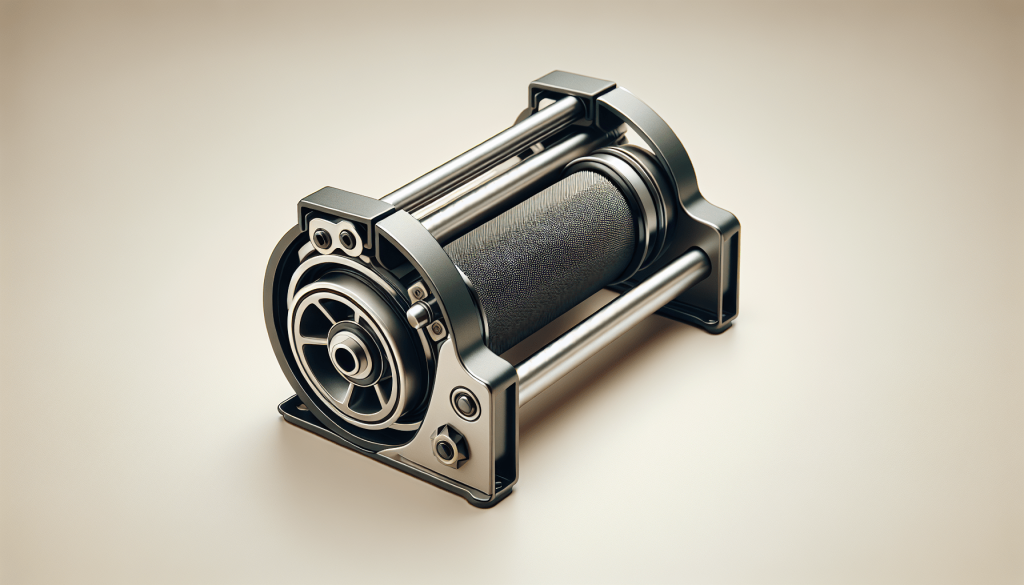
Testing the Operation
Steps to test the operation of the garage door post roller replacement
Once the garage door has been reattached and the roller replacement is complete, it is crucial to test its operation thoroughly. Follow these steps to perform a comprehensive test:
- Reconnect the power source to the garage door opener.
- Use the opener remote or wall switch to open and close the door multiple times.
- Observe the movement of the door and listen for any unusual noises or resistance.
- Pay attention to the alignment of the door, ensuring it closes evenly and seals properly.
- Test the sensor system, if applicable, to ensure it is functioning correctly and detecting obstacles.
Signs that the installation was successful
A successful roller replacement installation can be identified through several indicators:
- Smooth and quiet operation of the garage door during opening and closing.
- Even and symmetrical movement of the door along the tracks.
- Proper alignment of the door, with no visible gaps or uneven closing.
- Secure and stable positioning of the rollers within the track.
- Reliable functioning of the opener mechanism, without strain or excessive noise.
If you observe these signs, it is a clear indication that the roller replacement process was successful, and the garage door is operating as intended.
Troubleshooting tips if the door does not operate effectively
In some cases, despite following the installation steps carefully, the garage door may not operate effectively after roller replacement. If you encounter any issues, here are some troubleshooting tips:
- Check for any obstructions in the track, such as debris or objects that may hinder the movement of the rollers.
- Ensure all rollers are securely and correctly installed, aligned vertically and horizontally, and move freely along the track.
- Inspect the track for any damage or misalignment that may affect the movement of the door. If necessary, consult a professional for track repair or adjustment.
- Lubricate the rollers and track with a silicone-based lubricant to reduce friction and ensure smooth operation.
- Check the tension of the springs, as imbalanced or worn-out springs can affect the door’s operation. If necessary, consult a professional for spring adjustment or replacement.
By following these troubleshooting tips, you can address common issues and restore the proper functioning of your garage door after roller replacement.
Maintaining Your Garage Door Rollers
Frequency of maintenance checks
To ensure the longevity and reliable performance of your garage door rollers, regular maintenance checks are essential. It is recommended to inspect and maintain your rollers at least once every six months, or more frequently if you live in areas with harsh weather conditions or heavy usage of the garage door. By incorporating regular maintenance into your routine, you can identify and address any potential issues early on, prolonging the lifespan of your rollers and avoiding costly repairs.
Tips for proper maintenance of garage door rollers
To properly maintain your garage door rollers, follow these tips:
- Keep the track clean and free of dirt, debris, or any obstructions that may hinder the movement of the rollers. Regularly inspect the track and clean it as needed.
- Lubricate the rollers and track using a silicone-based lubricant. Apply a small amount to the tracks and rollers, avoiding excess lubrication that may attract dirt or grime.
- Inspect the rollers for signs of wear, damage, or misalignment. Replace any rollers that show significant signs of wear or have become loose or misaligned.
- Perform a visual inspection of the entire garage door system, including the springs, cables, and hinges. Look for signs of damage or wear and address any issues promptly.
By following these maintenance tips, you can ensure the proper functioning of your garage door rollers and extend their lifespan.
Expectations for the lifespan of garage door rollers with regular maintenance
With proper maintenance, garage door rollers can have a lifespan of five to seven years or even longer. Regular inspections, cleaning, and lubrication help prevent premature wear and ensure the smooth operation of the rollers. However, it is important to note that the lifespan of rollers can be affected by various factors, such as the weight of the garage door, the frequency of usage, and the environmental conditions. Therefore, it is crucial to monitor the condition of your rollers regularly and replace them as needed to maintain the safe and efficient operation of your garage door.
